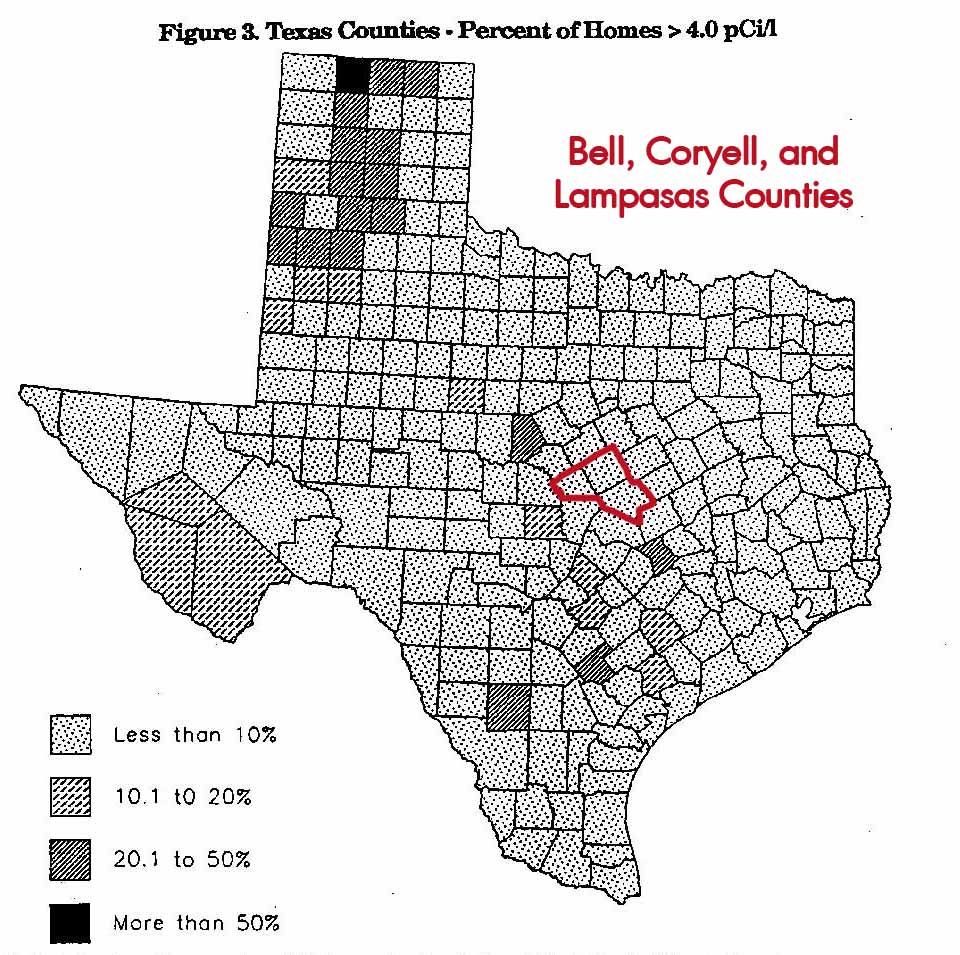
Takeaways
- Texas in general, and especially the Fort Hood area, have lower risks of radon
- Radon is a radioactive, naturally occurring gas that can cause lung cancer
- There are many proven methods of dealing with radon in a home
What is Radon?
Radon is a naturally occurring radioactive gas that comes from uranium located in rock. It can penetrate permeable rocks and eventually escape to the surface, into buildings or into the air.
Like any radiation, excessive amounts of exposure can result in higher risk of lung cancer. In fact, radon is the leading cause of lung cancer among non-smokers, responsible for 21,000 deaths a year.
Safe Levels of Radon
The EPA recommends taking action against radon if the amount is four picocuries per liter of air (4 pCi/L)
The chart below is from a 1994 survey of Texas, mapping out the counties in Texas with higher concentrations of homes with radon issues. No county in Texas falls within the EPA’s highest risk designation, though several, mostly in the Panhandle, have a moderate risk. The Fort Hood area – Bell, Coryell, and Lampasas counties – all have the lowest risk, measured at a median 1.2 pCI/l, with 0.0% of those areas measured over 4.0 pCi/l.
What can you do about radon?
For existing homes, homeowners can install a radon reduction kit in the foundation that literally sucks the radon from the ground and vents it out of the house instead of through it. The average cost to implement radon reduction measures is approximately $1500.
As a temporary measure, keeping your home well ventilated is a defense against radon, by keeping windows open. That is hard to do in Texas, but there are other benefits of letting your air circulate the few months of the year that the weather allows.
New construction homes can be built to specific radon resistant standards, a criterion for certain classes of energy efficient homes.
Granite Counters
Radon is naturally occurring in the ground…just like granite. Therefore, granite counters can actually emit some natural radiation in the form of radon. According to the Texas Department of Health and Human Services, the amount is small enough that it is not considered a health hazard.
Testing for Radon
Your general home inspector can often test for radon, though it can often add a considerable amount to the cost of the inspection. Radon test kits can also be purchased for as little as $20.
My recommendation is that you probably do not need to be too concerned with radon in the Fort Hood area unless you have a specific health condition or are alerted of a specific possible issue concerning the home or area.
Conclusion
The Fort Hood area has termites, foundation issues, hail, and a host of other common homeowner problems. Unlike other States, radon is not one of the primary risks of our area. But if it is a concern, there are certainly plenty of resources available for managing or avoiding radon issues!

